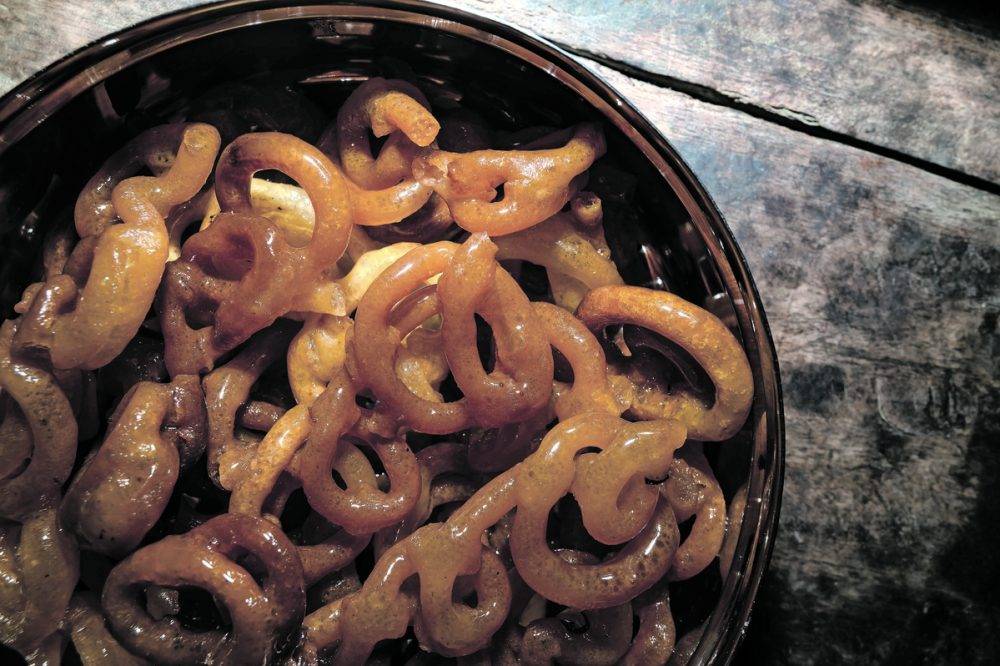
Inherited traditional food: Maize meal (above) is a staple in Southern Africa. Photo by: Marc Hoberman/Hoberman Collection/Universal Images Group via Getty Images)
When we reflect on our collective or individual heritage, we often overlook the elemental role that food plays in our lives. It has always meant more than basic sustenance. Food has been a cornerstone of human existence, arguably the very foundation upon which civilisation and community were built.
Many of our earliest celebrations are rooted in the harvest, with religious festivals deeply intertwined with food. Whether it is the consumption of specific foods, such as vegetables during Hindu festivities, the sacrificial rituals of Eid al-Adha or the acts of fasting observed by various religions, food is an essential part of cultural and spiritual life.
Food not only provides a sense of identity but is also woven into the national narratives of many countries. Consider pasta, which is synonymous with Italy, curry with India and hamburgers with the United States. These narratives often have a romantic character, frequently quite far removed from reality.
Conversely, food — or its scarcity — has sparked major political, economic and societal upheavals, from the bread riots in 18th-century England to the food shortages that ignited the French Revolution. Lenin’s famous slogan “Bread, land, and peace” ushered in the first socialist state in history.
In all these instances, the fight for food was inextricably linked to broader struggles for liberation. Yet, food has also been used to enforce repressive politics.
The earliest examples of this are tied to the process of capitalist accumulation, where, in Europe and subsequently around the world, people were dispossessed of their land, and where food, once a communal resource, became a commodity.
This was a key means of forcing people into the cities and into wage labour. The power of the colonial state was directly linked to the control and flow of resources, resulting in deprivation for the colonised and abundance and excess for the colonisers.
The Irish Potato Famine (1845-1852) was a devastating event that led to the death of more than a million people. The British government’s laissez-faire approach and failure to address the famine’s root causes led to starvation and suffering, entrenching widespread resentment of the British.
Almost 100 years later, the Bengal Famine of 1943, which led to the death of an estimated three million people, was also exacerbated by British colonial policies. Similar to the Irish Famine, the British government diverted food supplies to support the war effort, while local authorities hoarded grain, leading to widespread starvation.
Outside of these overt forms of using food as a tool of oppression, the quest for spices and new ingredients fuelled colonial expansion, with the brutal Atlantic slave trade driven by the insatiable demand for sugar, which later diversified into other crops such as rice and wheat.
Slaves taken from West Africa were valued for their knowledge of farming, having for centuries already cultivated crops such as drought-resistant rice. This knowledge was desperately needed in Europe’s zeal to fuel its ever-growing colonial expansion and imperialist projects.
The profits of the labour of that food production fuelled the building of the superpower that was to become the United States of America. Today, the food industry still remains one of the most profitable sectors of the US economy.
 The sweet snack jalebi is popular in South and West Asia, Africa and Mauritius. (Photo by Soumyabrata Roy/NurPhoto via Getty Images)
The sweet snack jalebi is popular in South and West Asia, Africa and Mauritius. (Photo by Soumyabrata Roy/NurPhoto via Getty Images)On the other end of the scale from those who control food are those who have had to radically change their lives and leave their homes, usually escaping wars, famine and droughts. Although powerless, these communities of people come to have an effect on our lives in much richer ways.
The migration of communities — whether forced or voluntary — has often been intertwined with food. Migrants frequently turn to food as a means of survival in their adopted countries. The global spread of Indian, Chinese, Italian and Ethiopian cuisines is not only a testament to these communities’ resilience but has also left an indelible mark on the culinary landscapes of their new homes.
For instance, fish and chips, now considered quintessentially English, was introduced to England by Jewish migrants from Portugal and Spain who sought refuge from persecution. One of the earliest fish and chip shops in England was opened by Joseph Malin, a Jewish migrant, in the 1860s. Today, chicken tikka masala, invented by migrants from South Asia in the United Kingdom, is widely deemed to be the national British dish.
Just as fish and chips have become a symbol of English tradition, pap is seen as a staple food in South Africa and across sub-Saharan Africa. Yet the maize from which pap is made is not indigenous to our continent. Maize was first domesticated in southern Mexico about 9 000 years ago, spreading across the Americas before 15th-century colonisers encountered it and transported it worldwide through colonial trade networks. It was brought to Southern Africa as a high-carb, high-energy food for workers.
Similarly, ingredients such as chilli, potatoes, chocolate and tomatoes, central to our daily diet and cultural traditions, trace their origins to Latin America.
South Africa’s culinary heritage is woven from the diverse histories and traditions of our people. Biltong, peri-peri chicken livers, samoosas, bunny chow and boerewors have specific origins and histories but have come to belong to us all. The same is true, of course, of the braai, which, although it has different inflections in different contexts, is recognisably the same ritual with a shared set of foods across different communities.
The beans for chakalaka originated in Latin America. The spices that flavour our marinades and sauces are the legacy of Indian, Malay and Indonesian influences brought by slaves in the Cape and indentured labourers and traders from India.
The boerewors sizzling on the grill has its roots in rural French sausage-making traditions, while the beer often accompanying it has its origins in German and Dutch brewing techniques.
Despite adversity, food has the power to unite people and break down barriers between communities. It can also serve as a healing force, helping individuals reclaim a sense of identity and belonging after it has been stripped away.
In the US, soul food is a poignant expression of love and creativity, born out of the hardships and cruelties of slavery. The same is true of many forms of food here, some of which now belong to us all.
Although we must celebrate this, we cannot forget that we are a country in which more than one in 10 households is going hungry. That is a political choice that we have made and continue making. Lenin’s slogan is still all too relevant for millions of our people.
Dr Vashna Jagarnath is a curriculum developer, historian, trade union educator, pan-African specialist and former deputy dean of humanities at Rhodes University.



 4 hours ago
23
4 hours ago
23

















